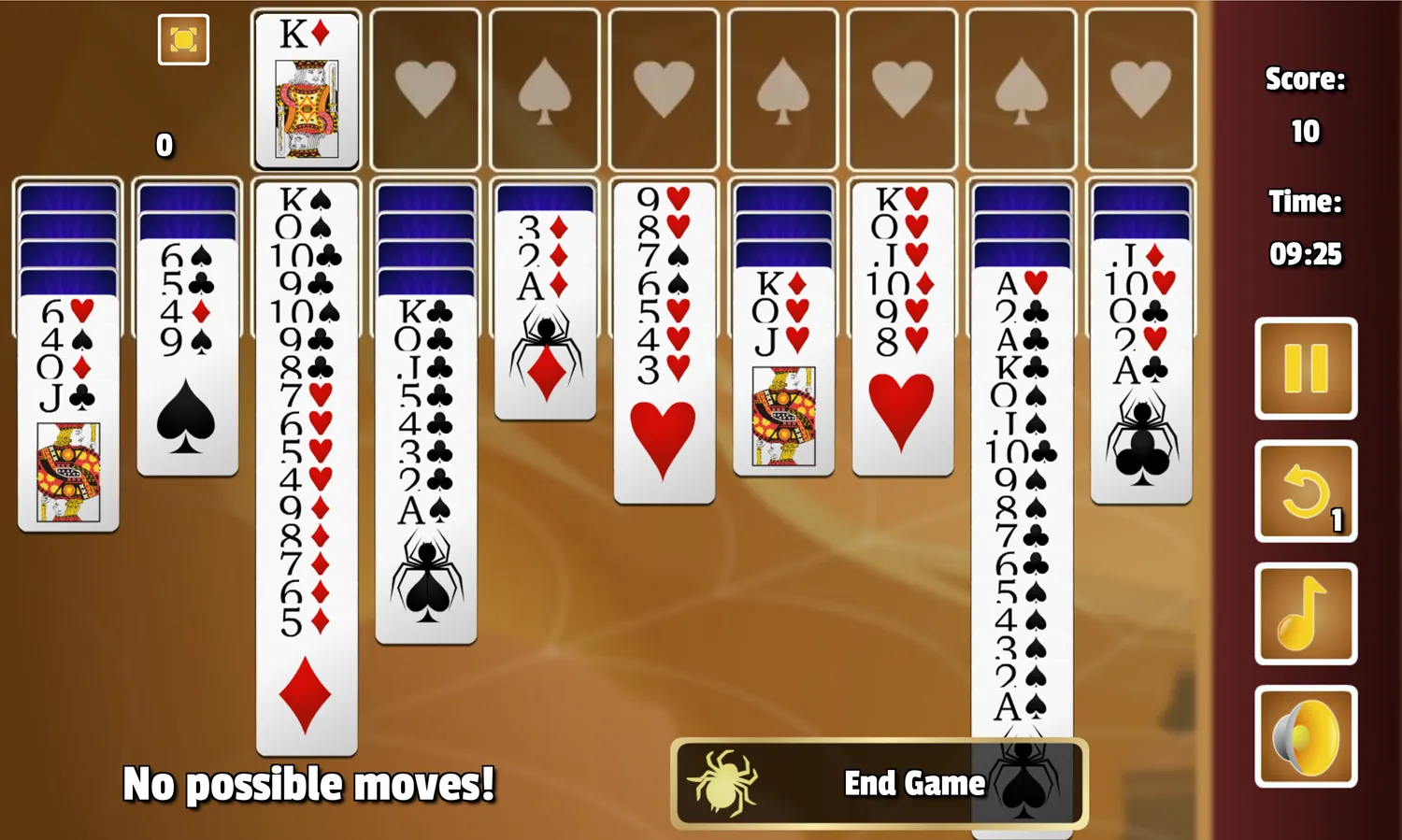What is Tarantula Solitaire
Tarantula Solitaire is a captivating single-player card game, a variant of the classic Spider Solitaire, offering a unique blend of strategy and luck. The game’s name likely comes from the way the cards are laid out, somewhat resembling a tarantula’s legs, though that’s more of a visual impression than a defining characteristic. It provides a challenging yet rewarding experience for players of all skill levels. Unlike many other solitaire games that use a single deck or two decks, Tarantula Solitaire uses four decks of cards, introducing an added layer of complexity and strategic depth. This increased number of cards means more opportunities for planning and thoughtful moves, making each game a stimulating mental exercise. The objective, which we’ll cover in the next section, is to clear the entire tableau by building sequences of cards, a task that will test your patience and strategic thinking.
Objective of Tarantula Solitaire
The main objective in Tarantula Solitaire is to remove all the cards from the tableau, which is the playing area where the cards are initially dealt. To achieve this, players must build complete sequences of cards, from King down to Ace, within each suit. Once a full sequence is built, it is automatically removed from the tableau. This removal clears up space and allows for the movement of other cards, inching the player closer to victory. Unlike other solitaire games where the ultimate goal is to organize all cards into suits regardless of the sequence, in Tarantula Solitaire, sequences must be built in a specific order within the tableau. It’s a race against time, requiring careful planning and execution of moves. The game is won when all eight complete sequences are successfully built and removed. This can be an extremely satisfying moment, marking the culmination of strategic planning and skillful card play.
Setting Up the Game
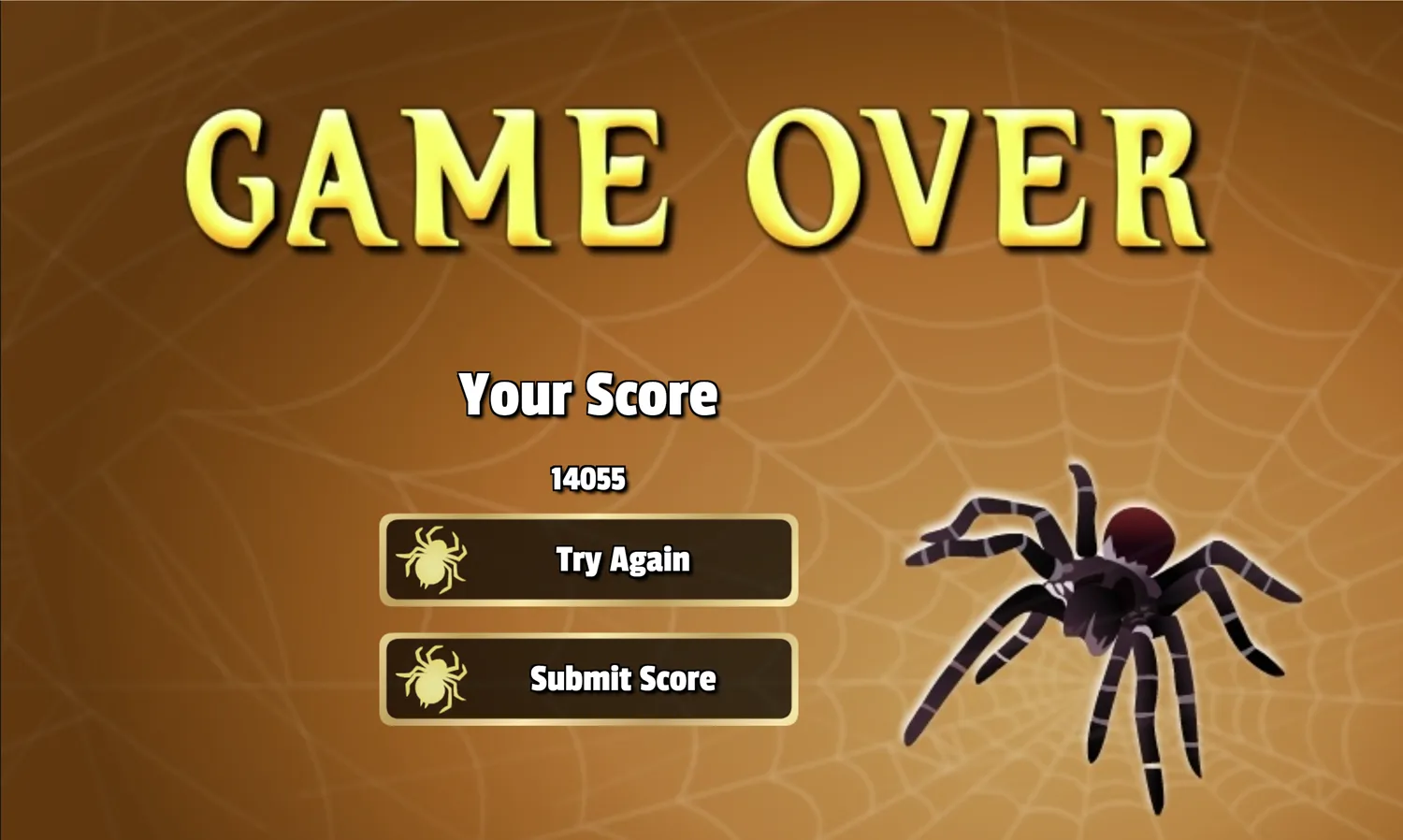
Setting up Tarantula Solitaire is the first step toward engaging in this challenging card game. Begin by shuffling four standard decks of 52 playing cards. This might seem like a lot of cards, but it’s a key element of the game’s complexity. Once shuffled, the tableau, which is the main playing area, is established. Cards are dealt into ten columns. The first four columns each receive six cards, while the remaining six columns receive five cards each. All the cards in the columns are dealt face down except for the top card of each column, which is dealt face up. The remaining cards form the stock, which is placed to the side. This initial setup creates the base from which you will make your strategic moves, attempting to build sequences and ultimately win the game. Proper setup is crucial, so take a moment to ensure all cards are correctly placed for a smooth start. (Image tarantula-solitaire-setup.webp)
Dealing the Cards
After the initial setup of the tableau, the process of dealing cards can take a few different forms. Primarily, the game starts with the initial deal, where the cards are arranged across the ten columns with face-down and face-up cards. Additional cards are drawn from the stock pile, which is dealt when there are no possible moves available on the tableau. Cards are dealt in rows of one, or depending on the variation, single cards or complete rows can be added. It’s essential to keep track of the remaining cards in the stock, as this pile represents your source of additional cards to continue the gameplay. The strategic use of these cards will heavily influence your success, so using the stock pile correctly is crucial to winning Tarantula Solitaire.
Understanding the Tableau
The tableau, as mentioned previously, is the core playing area of Tarantula Solitaire, where most of your strategic decisions will be made. It’s composed of ten columns of cards, partially visible at the start of the game, and where the main gameplay unfolds. The layout of the tableau is extremely important to grasp. The face-up cards at the top of each column are crucial. These are the cards that you will be able to manipulate and move around. Understanding the current arrangements, what face-up cards are available, and their relation to the face-down cards can provide a significant advantage. The arrangement dictates what moves are available, and planning around these available moves will improve your chances of winning. The goal is to create complete sequences within the columns of cards to eventually clear the tableau and win the game. (Image tarantula-solitaire-tableau.webp)
How to Move Cards
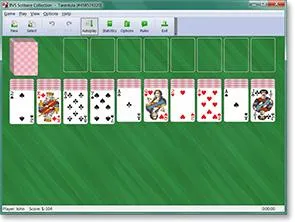
The ability to move cards in Tarantula Solitaire is central to progressing in the game. Cards can be moved between columns, and this is done by moving cards one at a time, or in complete sequences, depending on the game rules. Cards can be moved onto another card if it is one rank higher than the card you’re moving and if they are the same suit. For example, a 7 of hearts can be placed on an 8 of hearts, but not on an 8 of clubs. Empty columns offer a strategic advantage. Any card, or a sequence of cards, can be placed in an empty column, providing a crucial opportunity to rearrange the tableau. Mastering card movements requires you to anticipate future moves and plan ahead. This process is where the true strategy of Tarantula Solitaire shines. (Image tarantula-solitaire-card-moves.webp)
Building Sequences
The objective of building sequences in Tarantula Solitaire is at the heart of the game’s rules. Sequences must be built from King to Ace, in descending order, and of the same suit. These built sequences are essential for removing cards from the tableau and making progress toward winning the game. The construction of sequences might involve carefully moving cards between columns, revealing face-down cards, and creating opportunities for complete sequences. The more sequences you create, the closer you get to removing all cards from the table and thus winning. Building a sequence and removing it is a satisfying moment, signaling you are on the correct path to victory. (Image tarantula-solitaire-building-sequences.webp)
Clearing the Tableau
Clearing the tableau is the ultimate goal in Tarantula Solitaire, signaling a successful game. This occurs when you have built and removed eight complete sequences of cards (King to Ace) of the same suit. The process is extremely rewarding, signifying strategic success and skillful card play. The achievement comes from carefully arranging the cards, planning moves, and using the stock pile wisely. The ability to clear the tableau is a testament to your solitaire skills, as it tests your analytical thinking and foresight. The feeling of removing the last sequence, signifying a win, is a thrilling culmination of all the strategic effort. (Image tarantula-solitaire-winning.webp)
When the Game is Won
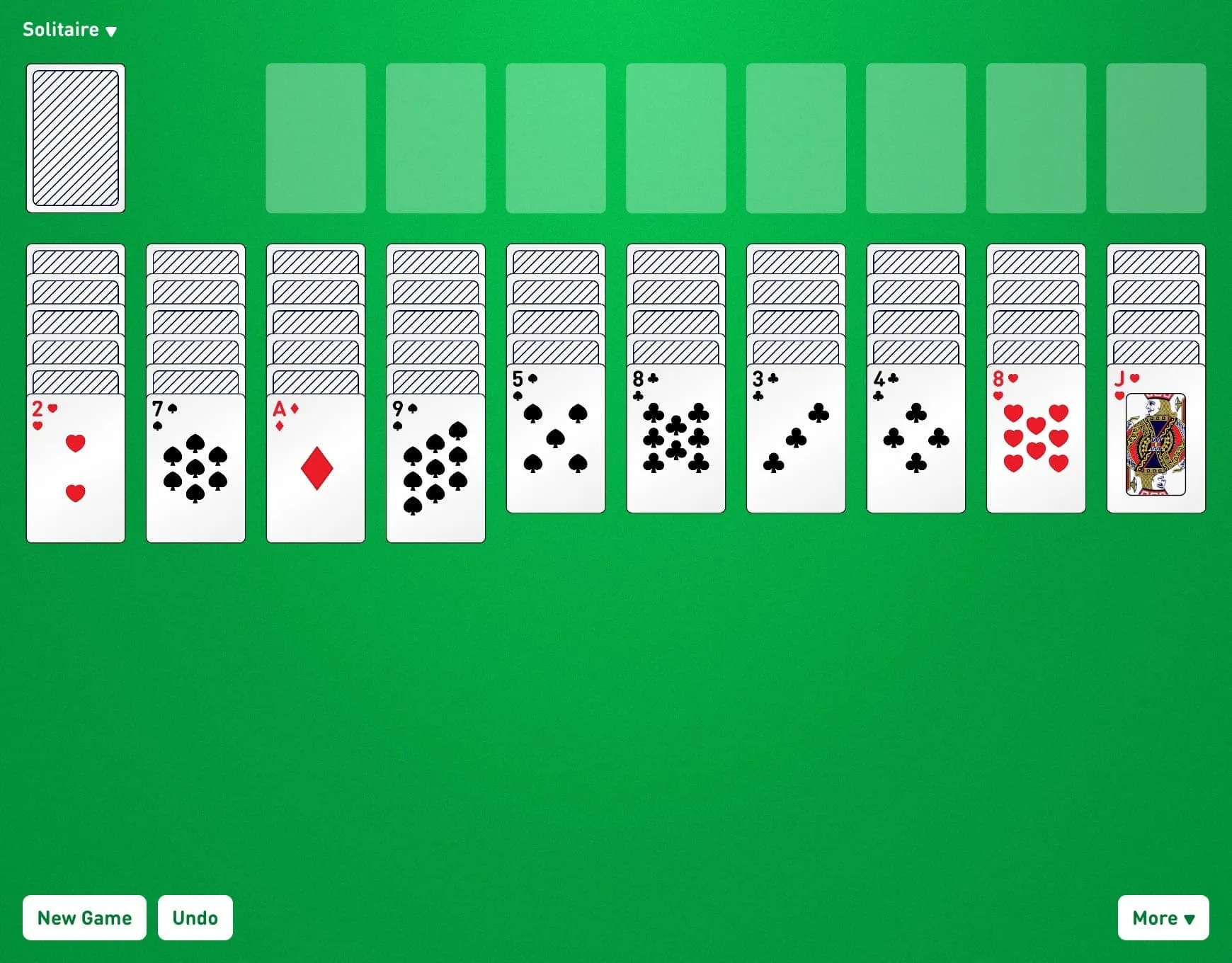
Knowing when you’ve won in Tarantula Solitaire is a clear indicator of strategic success and effective gameplay. The game is won when all eight complete sequences of the same suit, from King to Ace, are removed from the tableau. It’s a satisfying moment that reflects the careful planning and efficient execution. It’s more than just clearing the cards; it’s about the strategy involved in identifying potential sequences, planning moves to reveal hidden cards, and making the best use of each turn. The moment of completion, when all the sequences are built and removed, is a clear indication of mastery and strategic thinking. If you cleared the tableau, congratulations, you’ve successfully played Tarantula Solitaire.
Basic Gameplay Rules
The basic rules of Tarantula Solitaire determine the gameplay flow and provide the structure for strategic moves. You move cards by placing them onto cards of the same suit that are one rank higher. Remember, sequences are built from King to Ace in the same suit. The stock pile cards can be dealt when you run out of moves. Empty columns can be filled with any card or sequence. The game ends when you have built and removed all the sequences. Understanding these core rules is vital to engaging in the strategic essence of Tarantula Solitaire. Without a firm grasp of the basic rules, it can be difficult to know the correct moves and make progress in the game.
Dealing New Cards
Dealing new cards from the stock pile is an integral part of Tarantula Solitaire, providing opportunities for new moves when the tableau appears blocked. This typically occurs when you are unable to make any further moves with the face-up cards. Once this happens, you can deal a new row of cards from the stock to each of the columns. The new cards can reveal new sequences to build or allow you to clear the tableau. Knowing when to deal new cards and how to use the cards from the stock pile is key to maintaining the game flow and improving the chances of winning. Proper use of the stock pile can greatly increase your ability to see new options and strategies.
Dealing Single Cards
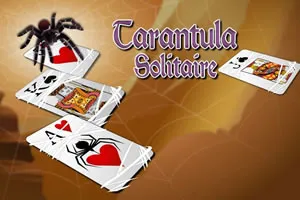
Some variations allow players to deal one card at a time from the stock pile, which can be helpful in certain situations. This offers more control over the game and provides a strategic advantage, allowing players to select single cards rather than whole rows. Knowing when to deal single cards can be useful in carefully setting up sequences and optimizing card movement. By dealing single cards, players gain more control over the tableau and can often find solutions to difficult card arrangements. Understanding the benefits and strategic uses of dealing single cards is a valuable skill, increasing the ability to win and enjoy Tarantula Solitaire.
Dealing a Full Row of Cards
Dealing a full row of cards is a common feature in Tarantula Solitaire, and is often used when the player has run out of moves. When all potential moves on the tableau have been exhausted, players deal the remaining cards from the stock pile. These new cards are distributed face-up onto each of the columns, allowing you to build new sequences. The addition of a new row can change the entire dynamic of the game, presenting new possibilities and strategic opportunities. Dealing an entire row often reveals new potential moves and new paths to build sequences, which could lead to a winning game. Knowing when to deal a full row is an important element of gameplay.
Hints and Tips for Tarantula Solitaire
Mastering Tarantula Solitaire demands a combination of strategy, foresight, and understanding of the game’s rules. Start by planning your moves. Analyze the tableau, and anticipate the impact of each card movement. Consider the potential outcomes of moving each card, and how it might affect your ability to build sequences. Pay attention to the order of suits when building. This will assist in avoiding dead ends. Use empty columns wisely, and always make strategic use of your stock pile. With practice and patience, you will see your skills improve and your win rate increase.
Strategic Card Moves
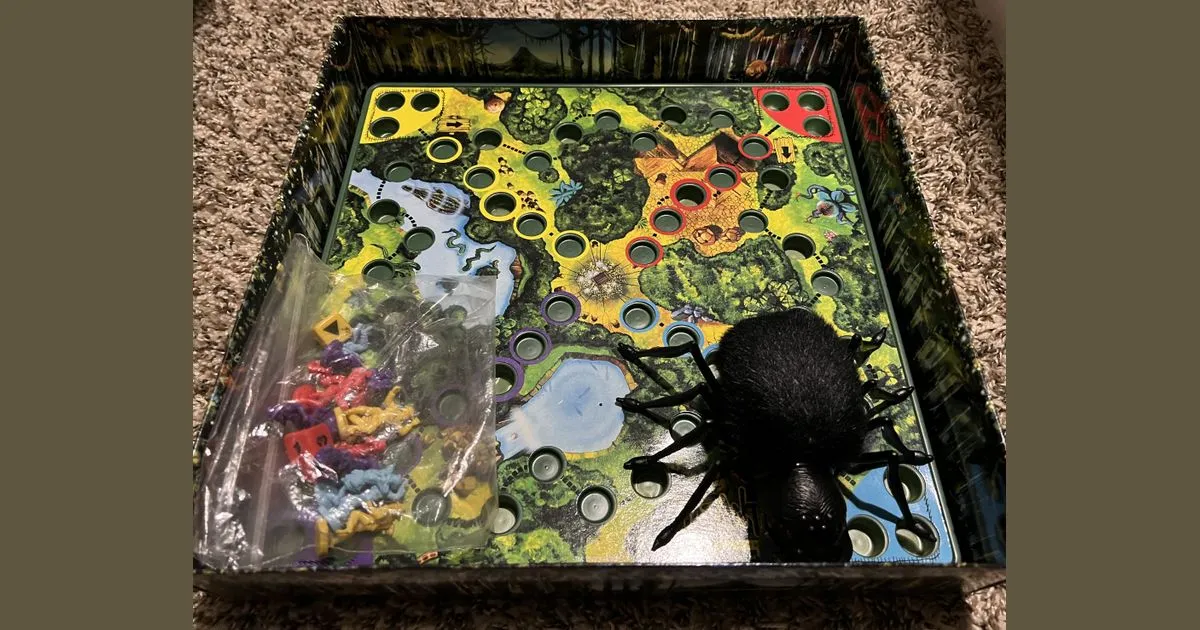
Strategic card movements form the core of playing Tarantula Solitaire successfully. Focus on prioritizing card movements and carefully analyzing the tableau to determine the optimal moves. Try to move cards from the bottom of the columns whenever possible, as it gives you the opportunity to reveal more face-down cards. Also, always look for opportunities to create spaces to place new cards and build sequences. Use the empty columns to organize your cards, and prepare for the next steps in your game. Mastering the strategic card movements means you will have a greater likelihood of clearing the tableau and winning.
Planning Ahead
Planning ahead is essential to winning Tarantula Solitaire, and the ability to look beyond the immediate moves will set you apart. Before moving a card, consider the consequences. Anticipate how the move will impact the game in the long run. Keep an eye on the possible moves that your current action might block, or open. This could involve the sequence of movements, and what they will unlock in the future. Always evaluate your card movements, and determine if there are better strategic choices. Careful planning is what will allow you to win more games, and provide a more rewarding experience.
Common Mistakes to Avoid
Avoiding common mistakes is key to improving your Tarantula Solitaire gameplay. Do not make moves without considering the long-term consequences. Avoid moving cards around without having a clear strategy. Don’t rush and use the stock pile too quickly. Avoid building sequences across different suits too early in the game, as it can quickly block your progress. Instead, concentrate on building sequences that will help in revealing more cards from the bottom of the columns. By avoiding common pitfalls, you will have better card movement skills.
Variations of Tarantula Solitaire
Tarantula Solitaire is also offered in various forms, providing different challenges and strategic opportunities. Some variants have different dealing rules, and others modify the way sequences are built. Some variations allow for the stock pile to be used more freely, while others might introduce additional obstacles. Experimenting with these versions can add to the gameplay and keep the game fun and refreshing. Understanding these variations can help you adapt your strategy and keep the game fun. (Image tarantula-solitaire-variations.webp)
Tarantula Solitaire vs Spider Solitaire
Although Tarantula Solitaire is a variant of Spider Solitaire, the two games have some differences that distinguish them. Both games involve building sequences from King to Ace. The key difference lies in the use of the four decks in Tarantula Solitaire, offering a more complex strategic challenge. Spider Solitaire typically uses one or two decks of cards, while Tarantula Solitaire uses four decks. This increase in card availability allows for greater strategic depth. The core idea remains the same, but the more complex tableau introduces added strategic challenges, requiring you to carefully analyze card moves and plan ahead. It makes for a challenging game. Whether you are a fan of Spider Solitaire or new to these card games, both are a great option to test your strategic skills.
